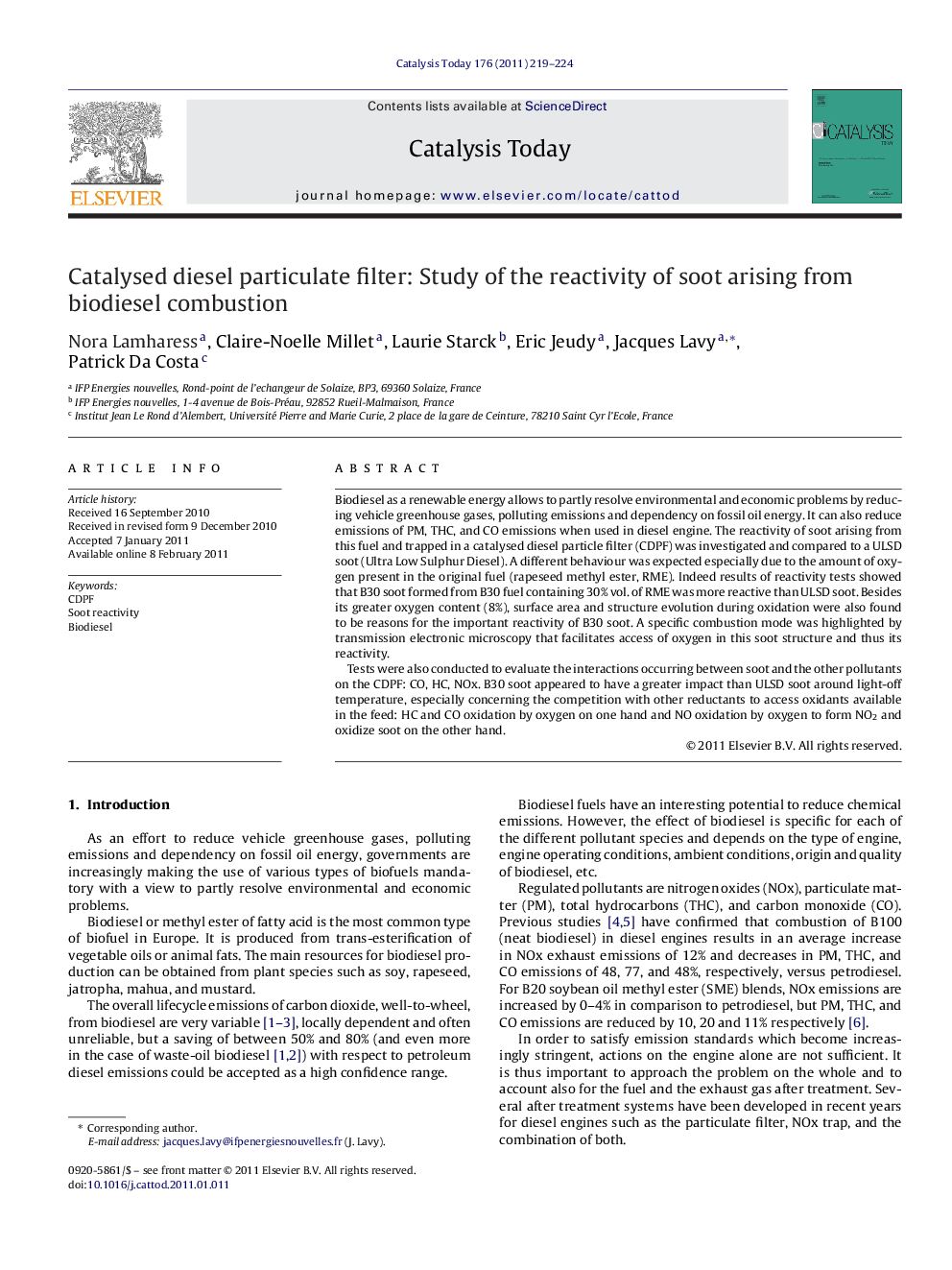| Article ID | Journal | Published Year | Pages | File Type |
|---|---|---|---|---|
| 55844 | Catalysis Today | 2011 | 6 Pages |
Biodiesel as a renewable energy allows to partly resolve environmental and economic problems by reducing vehicle greenhouse gases, polluting emissions and dependency on fossil oil energy. It can also reduce emissions of PM, THC, and CO emissions when used in diesel engine. The reactivity of soot arising from this fuel and trapped in a catalysed diesel particle filter (CDPF) was investigated and compared to a ULSD soot (Ultra Low Sulphur Diesel). A different behaviour was expected especially due to the amount of oxygen present in the original fuel (rapeseed methyl ester, RME). Indeed results of reactivity tests showed that B30 soot formed from B30 fuel containing 30% vol. of RME was more reactive than ULSD soot. Besides its greater oxygen content (8%), surface area and structure evolution during oxidation were also found to be reasons for the important reactivity of B30 soot. A specific combustion mode was highlighted by transmission electronic microscopy that facilitates access of oxygen in this soot structure and thus its reactivity.Tests were also conducted to evaluate the interactions occurring between soot and the other pollutants on the CDPF: CO, HC, NOx. B30 soot appeared to have a greater impact than ULSD soot around light-off temperature, especially concerning the competition with other reductants to access oxidants available in the feed: HC and CO oxidation by oxygen on one hand and NO oxidation by oxygen to form NO2 and oxidize soot on the other hand.
